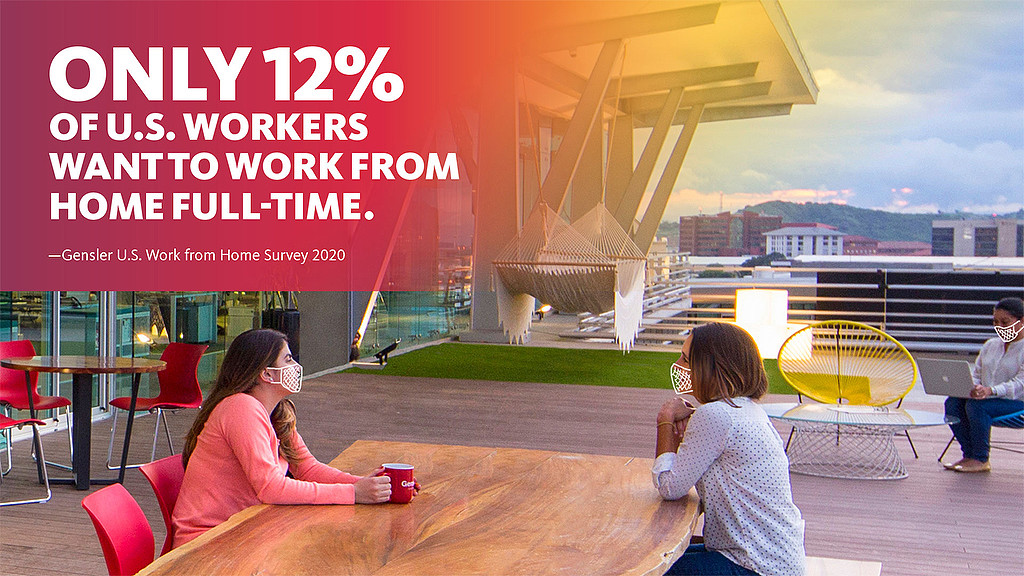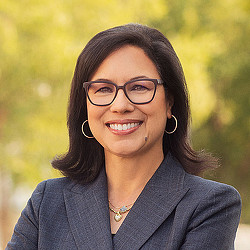Insights From Gensler’s U.S. Work From Home Survey 2020
May 26, 2020 | By Andy Cohen, Diane Hoskins
Fresh off the release of our "Back to the Office" guide on return strategies for building owners and organizations, the Gensler Research Institute has now published the findings of its study on the current experience of working from home during the pandemic and how this experience is influencing people’s expectations for the future workplace.
Gensler’s U.S. Work from Home Survey 2020 was conducted to help provide greater insight into the work from home experience and how the workplace will be designed in the post-COVID world. As a result, we are building a better understanding of how to address pre-pandemic workplace issues, including the need for more space, less desk sharing, and more autonomy.
The study that surveyed 2,300+ full-time U.S. office workers at companies of 100 or more people from April 16 to May 4 found that only 12% of U.S. workers want to work from home full-time. Before this experience, only one in ten U.S. office workers had regularly worked from home, and less than a third previously had the option to work from home. What our research found is that people overwhelmingly want to return to the office. Most people want to return to the workplace, but with significant changes to address distancing as well as concerns over growing densification prior to the pandemic.
The study found that 70% of people want to work in the office for the majority of their week. However, they want to see changes from the pre-pandemic density levels, ensuring there is more space for physical distancing while addressing noise and cleaning protocols.
The top reason workers want to come to the office: the people. When asked what they miss the most about working in the physical office, three out of four respondents said the people. When asked to rank the most important factors for wanting to come into the office, meetings with colleagues, socializing with people, and impromptu face-to-face interaction were the top three answers.
Despite the mainstream adoption of virtual collaboration technologies, respondents still listed people-focused reasons as the most important reason for coming into the office. By the same token, 55% of respondents said collaborating with others is harder, and 51% said staying up to date on the work of others is more difficult while working from home.
Millennial and Gen Z workers are less productive, less satisfied at homeOur research also found a generational difference in work-from-home productivity and effectiveness. Intuitively you might believe that younger workers generally have greater technological preparedness, an aptitude for mobile work, and are more rehearsed at building virtual connections. Our research dispels this preconceived notion — in fact, younger workers are reporting a far more challenging experience working from home, finding the experience more stressful, and reporting getting less work done compared to their older peers. Additionally, they are less likely to feel accomplished at the end of a typical day and lack awareness of what’s expected of them.
People expect to return to the office, but it should look different55% of people report that in order to feel comfortable returning to the office, a combination of stricter sick policies and changes around office cleaning and space configurations that accommodate physical distancing must be made first. Topping the list of new measures and practices viewed favorably by respondents are increased social distancing and more flexibility to work from home as needed, each with a 73% favorable rating.
While we continue to analyze our comprehensive Work From Home Survey data, we will be sharing the findings in bi-weekly briefings with you. We have so much to learn and adapt from this work from home experiment. We’ve gained incredible insights and ideas about how we can blend the best of the work from home experience with a reimagined workplace of the future. Download a copy of briefing #1 here.
We continue to research and test the look and feel of the future workplace. Whether it is a hub- and- spoke model or some hybrid of the home and physical office, it must cultivate a feeling of connectedness. Just like the workplace cultures we love, it must create community, and ensure we're part of something larger than ourselves.
For media inquiries, email .


